Philadelphia, PA Pollen and Allergy Report for Summer 2023
Pollen Allergy Trends in Philadelphia, PA
When is pollen lowest in Philadelphia, PA?

February
Lowest month total PPM
Avg. PPM
When is pollen highest in Philadelphia, PA?

April
Highest month total PPM
Avg. PPM
How does pollen in Philadelphia, PA compare to Pennsylvania?
Philadelphia has a higher average PPM than the state of Pennsylvania.
Philadelphia yearly avg PPM:
Pennsylvania yearly avg PPM:
How does pollen in Philadelphia, PA compare to the USA?
Philadelphia has a higher average PPM than the USA.
Philadelphia yearly avg PPM:
USA yearly avg PPM:
Is pollen worse this year in Philadelphia, PA?
Spring 2023 was worse than spring 2022.
Spring 2023 PPM:
Spring 2022 PPM:
Average PPM in Philadelphia, PA
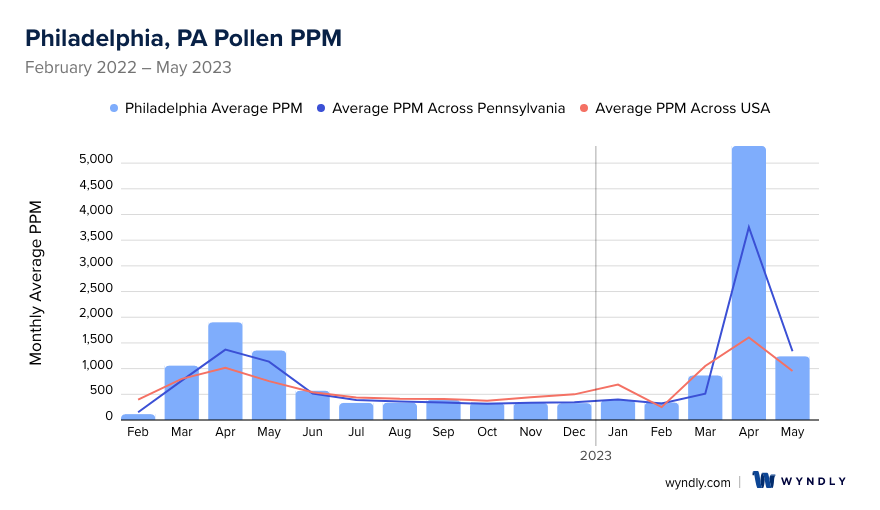
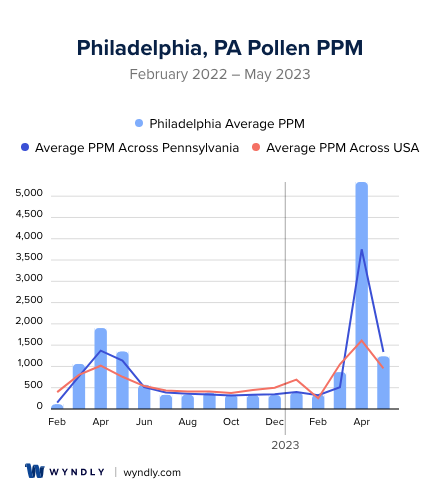
Philadelphia, PA Pollen and Allergy Breakdown by Month
Grass
When is grass pollen highest in Philadelphia, PA?
April has the highest grass pollen in Philadelphia, PA with an average PPM of
When is grass pollen lowest in Philadelphia, PA?
December has the lowest grass pollen in Philadelphia, PA with an average PPM of
Tree
When is tree pollen highest in Philadelphia, PA?
April has the highest tree pollen in Philadelphia, PA with an average PPM of
When is tree pollen lowest in Philadelphia, PA?
October has the lowest tree pollen in Philadelphia, PA with an average PPM of
Weed
When is weed pollen highest in Philadelphia, PA?
April has the highest weed pollen in Philadelphia, PA with an average PPM of
When is weed pollen lowest in Philadelphia, PA?
February has the lowest weed pollen in Philadelphia, PA with an average PPM of
Philadelphia, PA Pollen Monthly Breakdown by Pollen Type
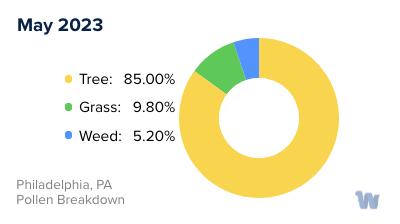
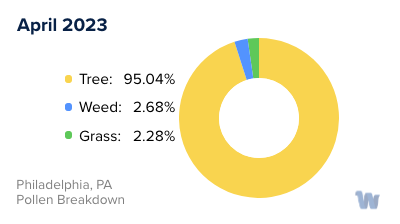
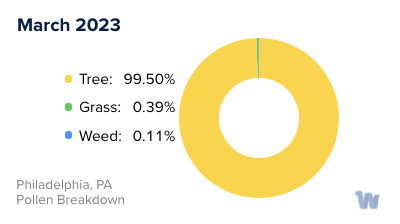
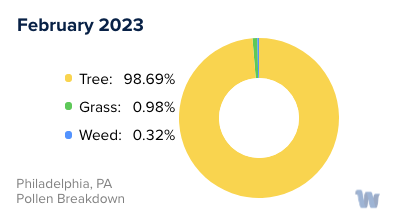
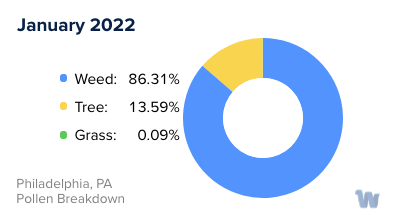
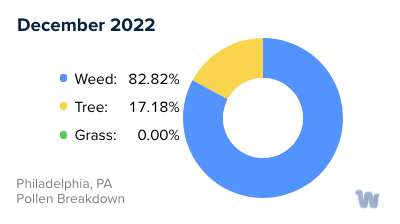
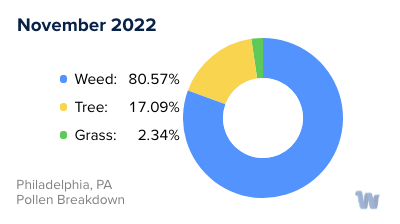
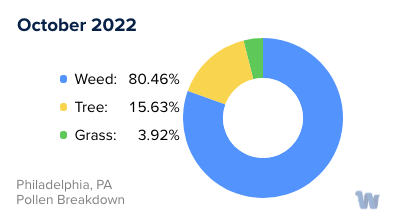
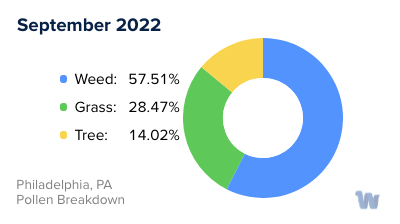
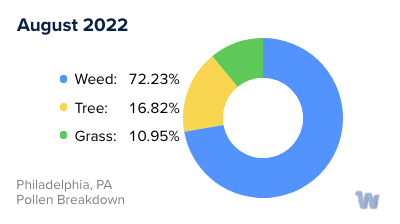
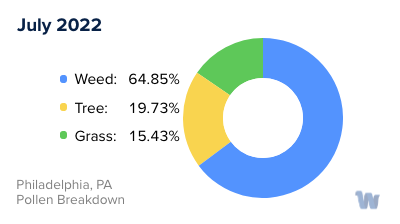
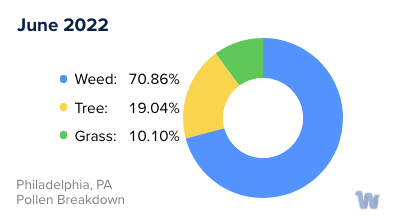
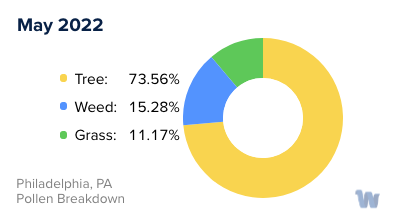
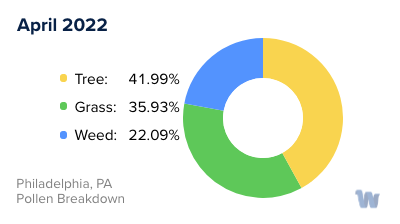
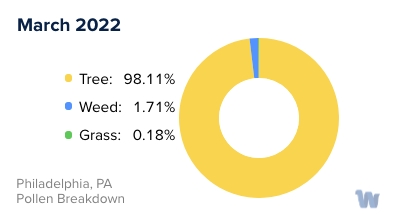
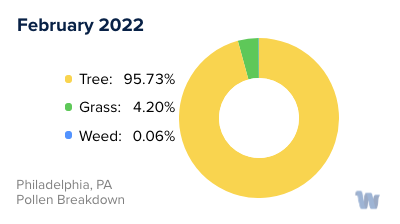
Pollen and Hay Fever in Philadelphia, PA
Pollen allergies, often referred to as hay fever or allergic rhinitis, are a prevalent health concern for many residents of Philadelphia, Pennsylvania. These allergies arise due to the immune system's exaggerated response to pollen, tiny, microscopic particles released by plants for fertilization. In Philadelphia, pollen allergies commonly occur due to three main types of pollen: tree, grass, and weed pollen.
Tree pollen is predominantly a concern during the early spring months. Various tree species in Philadelphia, such as oak, maple, and pine, release their pollen during this season. This can lead to an increase in allergy symptoms, such as sneezing, runny nose, and itchy eyes among sensitive individuals.
As the weather transitions into late spring and early summer, grass pollen becomes more prominent. Timothy grass, Kentucky bluegrass, and ryegrass are some of the grass types in Philadelphia known to cause pollen allergies. Those who are allergic to grass pollen may experience their symptoms escalating during this period.
Finally, as we move into late summer and fall, weed pollen, particularly from plants like ragweed, takes center stage. Ragweed is a significant contributor to fall allergies and can be especially problematic due to its ability to travel great distances on the wind. The prevalence of ragweed in and around Philadelphia can make this a challenging time for those with pollen allergies.
Pollen levels can vary significantly from day to day, influenced by factors such as temperature, rainfall, and wind. On warm, dry, and windy days, pollen counts can be particularly high, leading to more pronounced allergy symptoms.
Living in Philadelphia offers an array of cultural and historical experiences, but for those susceptible, it also means navigating the changing pollen seasons. Recognizing the different types of pollen and their respective seasons can help individuals better understand their symptoms and plan their outdoor activities accordingly. Remember, while pollen allergies can be uncomfortable, they're a sign of our city's thriving plant life and changing seasons.

